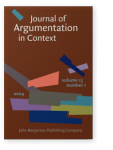Vol. 13:1 (2024) ► pp.131–162
When legal interpretation is not about language
The curious case of Lidia Poët
Linguistic arguments are paramount in legal interpretation. They are widely used by judges and considered to be ubiquitous across jurisdictions. It is claimed that they are decisive and limitative in the judicial interpretation of the law. The claims have long been subject to theoretical scrutiny and, recently, testing within experimental jurisprudence. In this paper, we analyse the judicial reasoning in a landmark Italian case from the end of the nineteenth century concerning Lidia Poët, an aspiring practising female lawyer. The case was decided in the last instance by the Turin Court of Cassation. We give a detailed argumentative analysis of the reasoning of the Court of Cassation in Turin in the Lidia Poët case and show that the crucial linguistic and systematic arguments used are not grounds for the interpretative decision to exclude women from the denotation of the word “lawyer.” We conclude that the linguistic arguments employed by courts often do not do the argumentative work they are expected to do. Instead, they cover the substantial views that have determined the ascription of normative meaning to a term or sentence.
Article outline
- 1.Introduction
- 2.Women, courts, and law in Italy
- 2.1Lidia Poët: The first woman admitted to the Italian bar
- 2.2The exclusion of women from the practice of law: The Italian debate
- 3.Interpretative argumentation of the Turin Court of Cassation
- 3.1Opponents of women exercising law
- 3.2Proponents of women exercising law
- 3.3The reasoning of TCC
- 4.Theoretical implications of the judicial reasoning in the Lidia Poet case
- 4.1A normative reconstruction of the interpretative dispute
- 4.2Some conceptual implications of the dispute
- 5.Stepping outside of language
- Acknowledgements
- Notes
-
Literature
